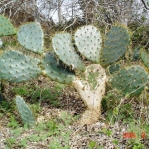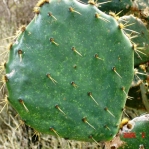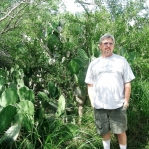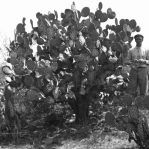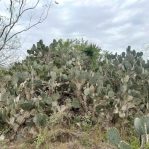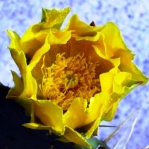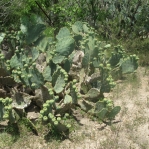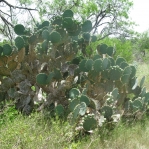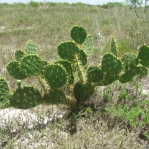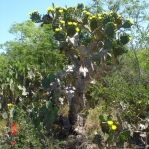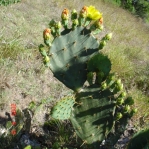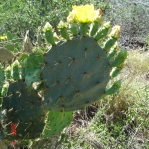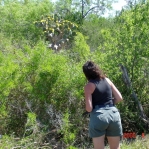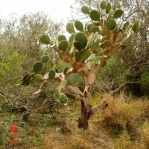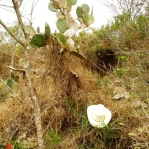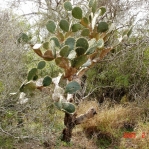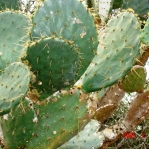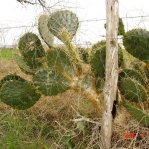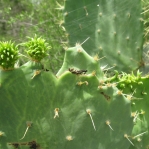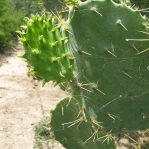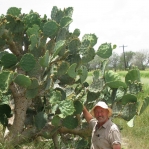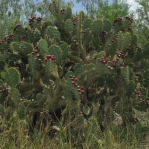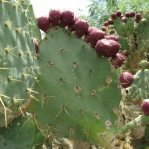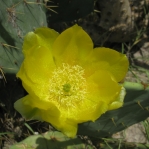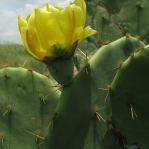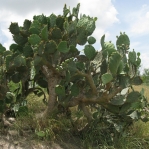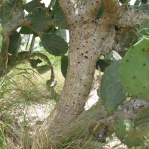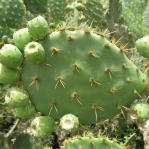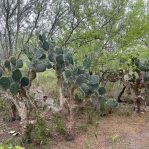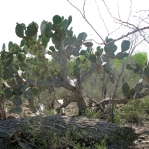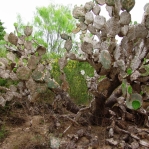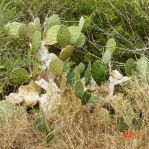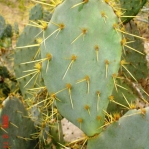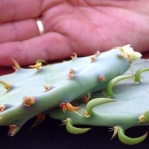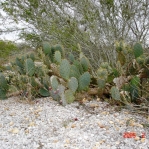
Griffiths, Annual Report of the Missouri Botanical Garden 21: 165, 1910
Holotype; Holotype; Isotype; Herbarium; Painting (Annals of the Missouri Botanical Garden 21: 165, 1910, Plate 19)
O. cacanapa is another arborescent Opuntia
Original citation
What is Opuntia alta?
Opuntia alta is a large, arborescent prickly pear cactus. Some ancient plants grow 3 to 4 m tall. It forms a prickly pear tree that often has one main trunk that can be as much as 0.5 m across in large specimens.
Details
The cladodes are generally of uniform shape on this prickly pear and may be subcircular or ovate to obovate but seldom elongate. Spines are yellow and 1 to 1.5 cm long and often fewer than in O. lindheimeri. Glochids are spread throughout the entire areole as in O. lindheimeri or O. engelmannii. The areoles of this Opuntia may be slightly raised in age. This Opuntia is found in South Texas along the Rio Grand River.
This prickly pear has lemon-yellow flowers that are smaller than those of O. lindheimeri or O. engelmannii. Sometimes the flowers are greenish-yellow or pale. Fruit is smallish, often numerous, and generally lacks a neck. Moreover, the fruits of this large prickly pear are smaller than those of O. lindheimeri and are often spherical or egg-shaped; generally, they do not have necks though they may taper to the base.
O. alta has been reported to be diploid or hexaploid by different sources.
Other Notes
Britton and Rose reported O. alta is one of the tallest, if not the tallest, Opuntia species in the United States. Sprawling plants of O. alta form large, distinct trunks even if they are not upright, and mature plants are much taller/larger than O. lindheimeri. Also, O. alta may have yellow-green or pale-green stigmas, whereas O. lindheimeri flowers have decidedly green stigmas. O. alta does not naturally occur in central, eastern, or western TX.
One O. alta plant grown from material collected near Laredo, TX survived for several years outdoors in a protected situation at the Rio Grande Botanic Garden in Albuquerque, New Mexico. It suffered damage each winter–but it survived for over half a dozen years. Thus, with some protection, this Opuntia can survive substantial cold. O. alta might be unsuitable as a plant for many gardens due to its large size. However, small specimens may be grown for years with appropriate pruning. The flowers and fruits are plentiful; flowers are not large.

